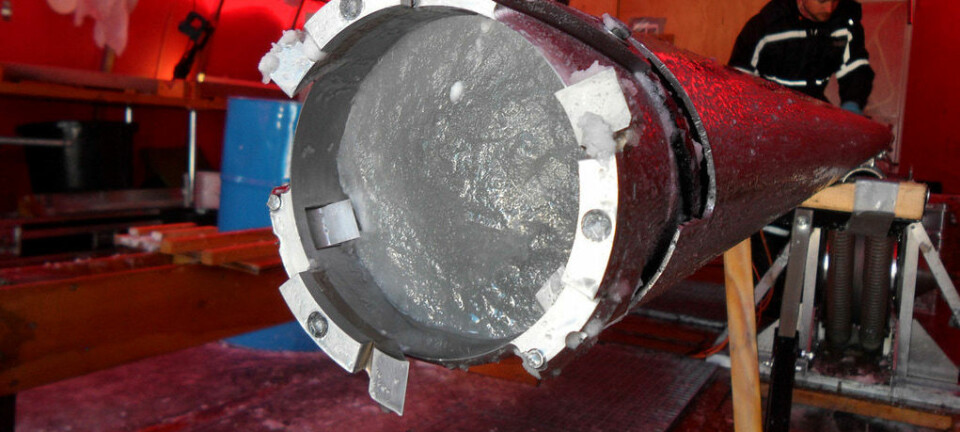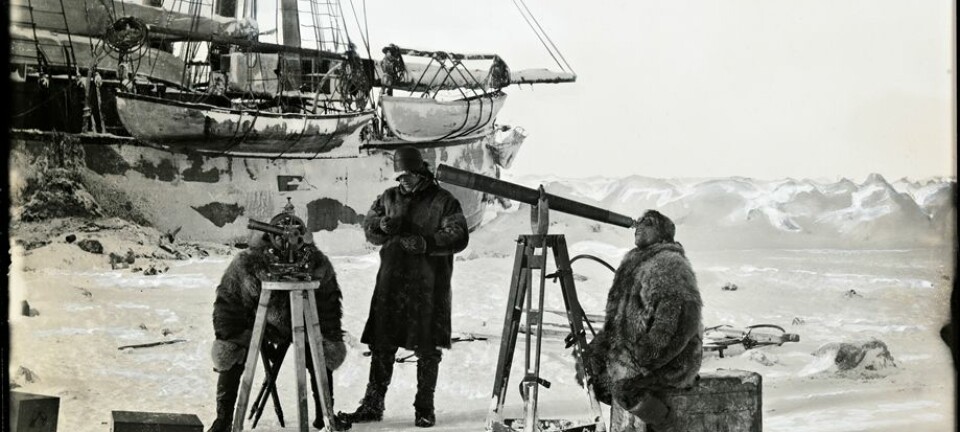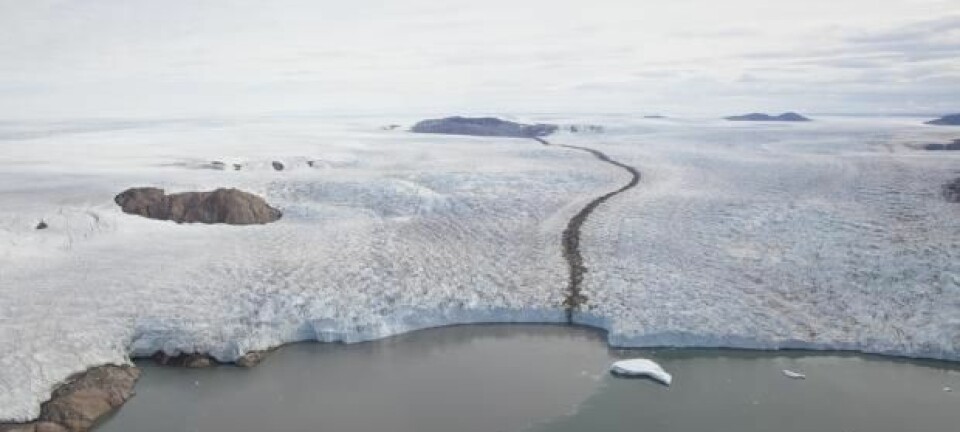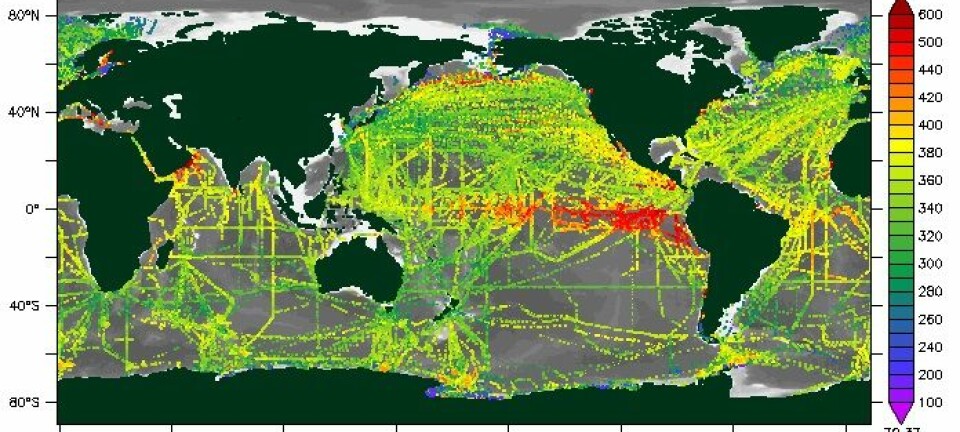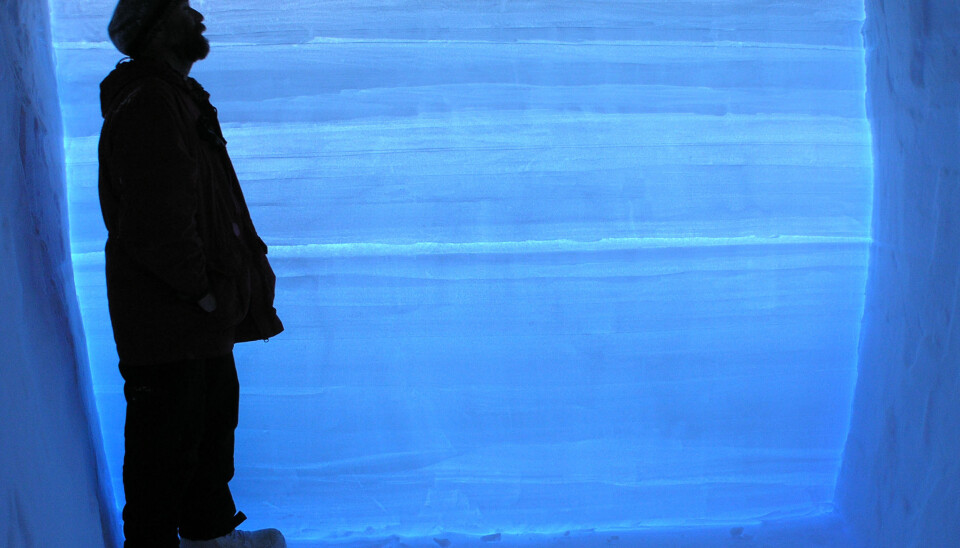
Remarkable climate details in Antarctic ice core
An ice core extracted from the West Antarctic Ice Sheet reveals in unprecedented detail how the weather in the Antarctic has changed over the past 68,000 years. The ice core may also tell us how future climate change will affect the frozen continent.
If the West Antarctic Ice Sheet melts, the water levels in the oceans will rise by six metres.'
So it shouldn’t come as a surprise that scientists are keen to understand the climate conditions that determine the fate of the ice on the frozen continent.
And now they have access to new, remarkably detailed information about these climate conditions in the shape of a 3.5-kilometre long ice core, which was recently extracted from the West Antarctic Ice Sheet.
The ice core provides hitherto unseen details of the Antarctic climate over the past 68,000 years.
The new ice core gives us a fascinating insight into the climatic past of West Antarctica, which we can link to the rest of the globe and thus create better models for how the climate will affect the ice and the water levels in the future.
This information will help scientists understand how the climate affects the West Antarctic Ice Sheet today and in the future, and ultimately how much and how quickly the water levels in the oceans will rise.
”West Antarctica carries as much ice as Greenland. West Antarctica is in more direct contact with the sea and therefore more sensitive to changes in e.g. sea temperature,” says Associate Professor Trevor James Popp of The Niels Bohr Institute, Ice and Climate, Copenhagen University, who co-authored the new study.
”The new ice core gives us a fascinating insight into the climatic past of West Antarctica, which we can link to the rest of the globe and thus create better models for how the climate will affect the ice and the water levels in the future.”
Ice core filled with detailed history
The newly-extracted ice core is the first of its kind to provide a detailed account of West Antarctica’s past.
It’s incredibly valuable for us to see how things change from one year to the next.
Previous ice cores from the area have been extracted too close to the sea and with a purpose other than to create a detailed insight into the climate.
Ice cores from the East Antarctic Ice Sheet are of little use, too. They represent an entirely different climate, as East Antarctica lies on a plateau above sea level, whereas West Antarctica rests on bedrock well below sea level.
The new ice core thus fills a hole in the field of glaciology.
68,000 years of climate history laid bare
The 3.5-kilometre long West Antarctic ice core is formed by the incremental build-up of annual layers of snow.
The new ice core enables us to create a sequence of events where we can look at what happened first and what the consequences were during e.g. the end of the last Ice Age.
The snow contains information about the air through which the snowflakes fell, enabling the scientists to analyse and date each layer of the ice core.
This allows them to determine the temperature and the CO2 and methane content in the atmosphere over the years, and how much of the sea around Antarctica has been covered by ice over the past 68,000 years.
Annual changes in climate can also be observed in the ice core:
”It’s incredibly valuable for us to see how things change from one year to the next,” says Popp.
Sequence of events unfolded in ice core
The level of detail in the ice core is so high that it helps the scientists answer an important chicken-and-egg question:
”When we look at the climate over long periods where the level of detail is low it can be hard to see if e.g. the CO2 levels in the atmosphere rose before the temperature rose or vice versa,” he says.
”Without the high level of detail it looks as if it all occurred at the same time. The new ice core enables us to create a sequence of events where we can look at what happened first and what the consequences were during e.g. the end of the last Ice Age.”
The sequence of events for the end of the last Ice Age shows that the melting occurred 2,000 years earlier than previously assumed, and that the sea temperature and the loss of ice cover in the sea around Antarctica were particularly important factors, as they preceded the majority of the melting.
Important for future climate models
An understanding of the driving forces behind the Antarctic climate is not only relevant for the climate in Antarctica and in the southern hemisphere.
Water from the sea around Greenland travels through deep-water currents all the way down through the Atlantic Ocean and re-emerges at the surface in Antarctica.
This link between the climate in the north and south is highly complex and involves numerous factors that affect one another.
Understanding the interplay between these factors helps scientists create climate models that predict future climate, water levels, ice cover, etc.
With the new ice core, they have now taken a big step in the right direction:
”When we create models, we calibrate them with data from both past and present,” says Popp.
“Of course, the better the data, the better the predictions. So detailed ice core data covering the past 68,000 years in West Antarctica is obviously very interesting as the ice core can help us increase the precision of our climate models.”
----------------------
Read the Danish version of this article at videnskab.dk
Translated by: Dann Vinther
